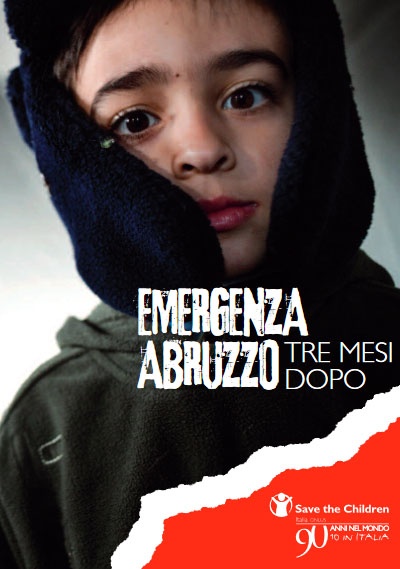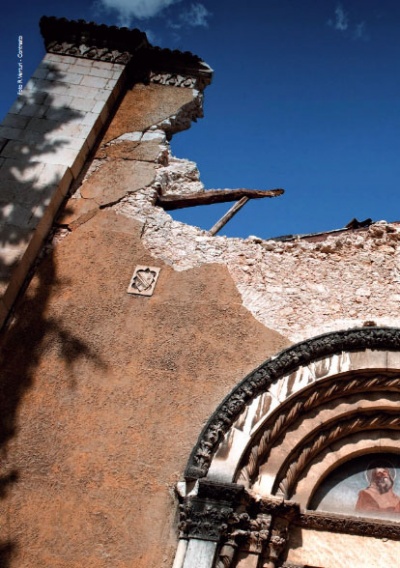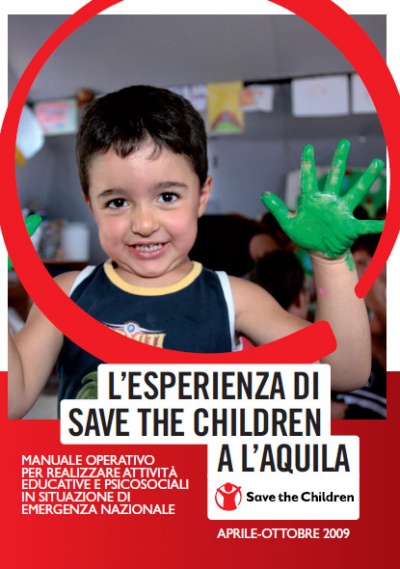Emergenza Abruzzo - Manuale operativo
Abstract
Subito dopo il terremoto del 6 aprile 2009, che ha colpito la città di L’Aquila e gli altri comuni nelle vicinanze, Save the Children Italia ha deciso di intervenire, aprendo all’interno di quattro tendopoli un CFS (Child Friendly Space) o “Spazio a Misura di Bambino”, con l’obiettivo di offrire un supporto a bambini, bambine e adolescenti, garantendo loro uno spazio fisico nel quale essere accolti, coinvolti e tutelati nei loro diritti, così come sancito dalla Convenzione ONU sui Diritti dell’Infanzia e dell’Adolescenza (CRC). In particolar modo, seguendo il protocollo adottato da Save the Children Alliance in contesti di emergenza, lo staff si è fin da subito trovato a dover individuare e realizzare una varietà di attività psicosociali, ludiche e, successivamente, educative da proporre ai bambini e ai ragazzi ospiti delle tendopoli create dalla Protezione Civile per accogliere la popolazione rimasta priva delle abitazioni. Per Save the Children Italia questa è stata la prima esperienza di partecipazione e di gestione di una situazione di emergenza all’interno del proprio Paese. Questo manuale vorrebbe essere un contributo per gli operatori, i volontari e tutti coloro che in una situazione di emergenza nazionale si trovino ad affrontare con la stessa urgenza situazioni simili e ad avviare attività e giochi per coinvolgere i bambini e gli adolescenti, avendo cura non solo di “intrattenere”, di riempire degli spazi temporali lasciati vuoti dagli eventi, quanto di contribuire attivamente al ricrearsi di condizioni di “normalità” e di occasioni all’interno delle quali bambini e ragazzi possano sperimentare nuove forme di socialità e di aggregazione, trovar e supporto psicosociale, riattivare o ri-scoprire proprie competenze e abilità, apprendere, condividere e partecipare.
Immediately after the earthquake of 6 April 2009, which hit the city of L'Aquila and the other municipalities in the area, Save the Children Italy decided to intervene, opening a CFS or "Child-Friendly Space" inside four tent cities, with the aim of offering support to children, guaranteeing them a physical space in which to be welcomed, involved and protected in their rights, as enshrined in the UN Convention on the Rights of the Children. In particular, following the protocol adopted by Save the Children Alliance in emergency contexts, the staff immediately identified and implemented a variety of psychosocial, recreational and, subsequently, educational activities to be offered to children and young people hosted in the tent cities created by the Civil Protection to accommodate the homeless population. For Save the Children Italy, this was the first experience of participating in and managing an emergency situation within its own country. This manual would like to be a contribution for operators, volunteers and all those who, in a situation of national emergency, find themselves facing similar situations with the same urgency and to start activities and games to involve children and adolescents, taking care not only to "entertain", to fill the time spaces left empty by events, but also to fill in the time spaces left empty by events. as well as to actively contribute to the recreation of conditions of "normality" and occasions within which children can experiment with new forms of sociality and aggregation, find psychosocial support, reactivate or re-discover their skills and abilities, learn, share and participate.


